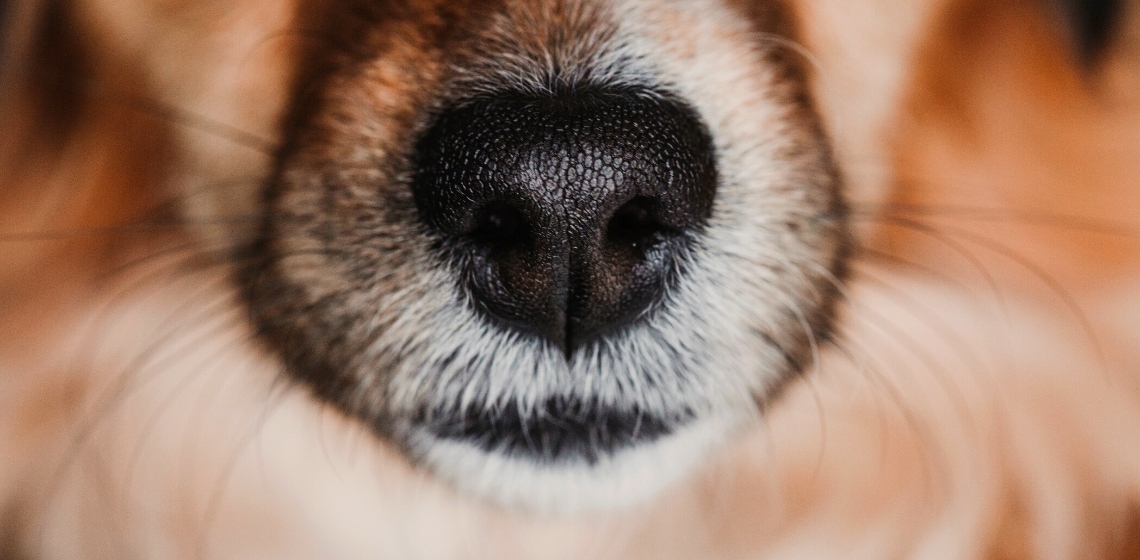If you had to draw a cartoon dog, you would probably stick some little lines out of each side of the face to represent their whiskers. But what are these strange little hairs? Do they serve a purpose, or are they just decorative? Are all large hairs on dogs’ face whiskers? Let’s have a look at the details!
Table of Content
What are whiskers?
Whiskers (or “vibrissae”) are specialized hairs that grow on the side of dogs’ faces. They are much more sensitive than regular hairs and help a dog feel when their face is coming close to other objects. They can also feel currents in the air around them, helping them to sense wind, or to feel when large objects are moving toward them.
However, sometimes other tufts of fur on dogs’ faces are commonly referred to as “whiskers”. These are usually longer pieces of fur that stick out more noticeably but are not actually different from regular fur.
What do whiskers look like?
Whiskers are longer and thicker than regular fur, and are usually straight, though they can be curly in certain breeds or senior dogs. They usually grow from their own follicle (the bump at the base), though occasionally two or three whiskers may grow from the same follicle.
True whiskers grow on either side of the muzzle and over the top of the eyes (where a human’s eyebrows would be). However, other tufts of fur on a dog’s face are sometimes informally referred to as whiskers, too.
Do all dogs have whiskers?
Yes, all dogs – even hairless breeds – can grow whiskers! However, some dogs may have more whiskers than others, and they can vary in thickness and color, too.
Why do dogs have whiskers on their cheeks?
Whiskers on the side of the face allow dogs to feel their way through narrow spaces without the risk of injuring their face or getting stuck in an opening that is too tight. In the wild, this would have been useful when making their way through the undergrowth or between rocks in a cave. Now, it helps them not to bump into the sofa when they are chasing a ball, or to avoid patio furniture when running in the garden!
Their whiskers also allow dogs to sense movement in the air around them. This lets them feel for breezes or gusts of wind, and also sense larger objects that are moving towards them at speed.
Why do dogs have whiskers above their eyes?
Like the whiskers on their cheeks, the eyebrow whiskers allow dogs to feel when objects are getting close to their head. These ones are particularly important as they can help to prevent damage to the eyes, particularly in narrow spaces or when going through dense bushes.
Corneal abrasions (damage to the surface of the eye) are common in dogs of all ages who like to go exploring, and these whiskers can play a vital role in trying to prevent these injuries.
Some dogs may also have large tufts of fur above their eyes, similar to human eyebrows. These are often called “whiskers”, but are actually just made of regular fur, rather than specialized whiskers. They can help to stop water from running into dogs’ eyes when it is raining.
Why do dogs have whiskers… under their chin?
Dogs going through narrow openings also need to feel what’s beneath them, so some dogs will have true whiskers on their chin. However, some dogs will have larger, thicker tufts of fur on the bottom of their muzzle, which can look quite like a human beard. These are not true whiskers, as they are shorter and often not as sensitive, but they are sometimes called “whiskers” anyway.
Why do dogs have whiskers… on their neck?
True whiskers do not grow on dogs’ necks, so if you see larger or longer hairs further down, these are likely to be tufts of regular fur. This happens especially at points where fur going in different directions meets and forms a swirl, sometimes known as a “whorl”. Here, fur grows in all directions, and may stick out more than normal.
Conclusion
Whiskers are a useful way for our dogs to feel the world around them and help them to navigate tight spaces or dense undergrowth. We should avoid cutting them, if possible, as this may make our dogs more prone to accidents. However, it is not painful to cut whiskers, so do not worry if you do so accidentally. We should be gentle when stroking around whiskers, as they are very sensitive and it can be painful if we pull on them accidentally. If you are concerned about your dog’s whiskers, or any of the hair or skin on their heads, then you should speak to a vet for advice.
FAQ
If a dog loses their whiskers, they may be more prone to bump into objects with their head, which could cause them to injure their face or eyes.
All dogs – even hairless ones – have a few whiskers around their face. However, some dogs have lots of obvious ones, whereas others only have a few small ones.
Cutting a dog’s whiskers with scissors or clippers is not painful. However, pulling at whiskers can be very sore, as the base of the hair (the follicle) is very sensitive.








